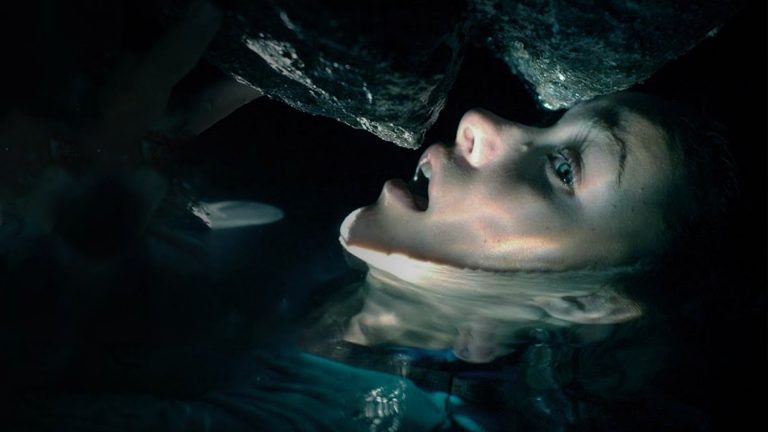Scroll down to watch our video.
You’re out sailing on the beautiful, vast reaches of the sea. But the tide starts to pick up, a colossal wave violently crashes into your boat. You lose your bearings as the ship flips head over heels. There’s not enough time to abandon ship as the water surrounds the boat.
You’re trapped in your cabin, sinking into the depths of the sea, with little food, drinking water, or supplies. There’ve only been a handful of people who’ve been stranded underwater, and lived to tell the tale.
On May 26, 2013, Harrison Okene, a cook, was trapped in his tugboat after it capsized. It sank over 30 m (100 ft) to the bottom of the ocean.
He survived for a breathtaking three days, before he was rescued by a diving team. But it wasn’t just luck that helped him defy death. It all came down to physics. How much time would you have before you ran out of air?
How could you stay warm in the freezing water? And what could kill you before you ran out of oxygen?
Step 1: Find an Air Pocket
You’re probably going to need some air, and you’ll need to find it quick. On average, most people can hold their breath for about 30 seconds. After that, your chances aren’t very good. If you’re not already gasping for air, the lack of oxygen won’t kill you, but carbon dioxide will.
When you’re unable to breathe, carbon dioxide can’t leave your body, so it builds up in your bloodstream. It acidifies the blood, and can kill you in just a few minutes.
But if you’re trapped in an area with rooms, like a boat or a cave, swim up. You might be able to find an air pocket. Any air that’s trapped in a room will rise above the water, making an air bubble that you can breathe in.
Step 2: Make a Platform
Now that you’ve found some air, you might be feeling a little chilly from swimming in the cold water. Hypothermia sets in when a person’s temperature falls below 35°C (95°F). You’ll start to shiver, feel tired and confused, lose consciousness, and die within hours.
If you didn’t pack your pool floaties, try to find anything that you can use to keep yourself above water, like wood debris. Okene found a mattress to keep him afloat. This will help slow down the amount of body heat you lose, and help to prevent hypothermia.
Step 3: Keep the Water Moving
You might think that running out of air is the next problem you’ll face in an enclosed space. But you’ll build up toxic levels of carbon dioxide in your blood before you use up the oxygen. And by the way, there’s more carbon dioxide underwater than on land.
Splash the water inside your air pocket. That’ll increase the surface area of the water so it absorbs more CO2, helping to keep the amount in your blood from reaching toxic levels.
Step 4: Try Not to Panic
Panicking and hyperventilating uses a lot more oxygen. The more oxygen you take in from the air, the faster you’ll run out of it. And you’ll be replacing it with toxic CO2. Keep calm by thinking of loved ones, your favorite activities, or thinking of a happy place.
Step 5: Wait for Rescue
Unfortunately, if you’re stuck in deep waters, you probably won’t be able to swim back to land. Your best chance of surviving is to live as long as possible until a rescue team arrives.
Once you make it out of the water, the danger doesn’t end there. You’ll have to enter a decompression chamber to readjust from deep water pressure to normal pressure levels.
The decompression process can last for days, depending on how long you spent underwater, and how far down you were. But now, you’ve made it. You’ve survived being trapped in one of the deepest dangers you might find yourself in.
So the next time you go out on the water, don’t go alone. Always make sure someone on land knows when you plan to return. If you do find yourself in a situation like this, they can send a rescue team to find you.
Now that you’re ready to survive being trapped underwater, you might want to be prepared for the disasters that could cause such a problem in the first place. Stuck on a sinking ship? Take a breather. We’re here to help on How To Survive.
Sources
- “Near Drowning: Causes, Symptoms & Treatments”. 2020. Healthline.
- “The Science Behind Man Surviving Underwater For Three Days”. 2013. nationalgeographic.com.
- “This Is What Happens To Your Body When You Drown”. Brainiac. Youtube.
- “Undersea Miracle: How Man In Sunken Ship Survived 3 Days”. Lallanilla, Marc. 2013. livescience.com.
- “Drowning”. 2020. who.int.
- “How Long Can You Hold Your Breath?”. Palmer, Brian. 2013. Slate Magazine.


















